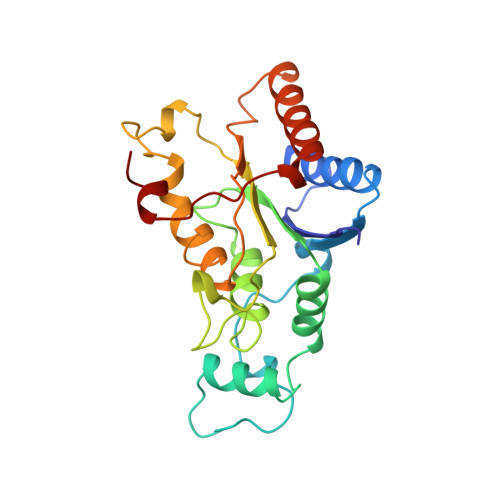Crystal structure of human quinone reductase type 2, a metalloflavoprotein.
Foster, C.E., Bianchet, M.A., Talalay, P., Zhao, Q., Amzel, L.M.(1999) Biochemistry 38: 9881-9886
- PubMed: 10433694
- DOI: https://doi.org/10.1021/bi990799v
- Primary Citation of Related Structures:
1QR2, 2QR2 - PubMed Abstract:
In mammals, two separate but homologous cytosolic quinone reductases have been identified: NAD(P)H:quinone oxidoreductase type 1 (QR1) (EC 1.6.99.2) and quinone reductase type 2 (QR2). Although QR1 and QR2 are nearly 50% identical in protein sequence, they display markedly different catalytic properties and substrate specificities. We report here two crystal structures of QR2: in its native form and bound to menadione (vitamin K(3)), a physiological substrate. Phases were obtained by molecular replacement, using our previously determined rat QR1 structure as the search model. QR2 shares the overall fold of the major catalytic domain of QR1, but lacks the smaller C-terminal domain. The FAD binding sites of QR1 and QR2 are very similar, but their hydride donor binding sites are considerably different. Unexpectedly, we found that QR2 contains a specific metal binding site, which is not present in QR1. Two histidine nitrogens, one cysteine thiol, and a main chain carbonyl group are involved in metal coordination. The metal binding site is solvent-accessible, and is separated from the FAD cofactor by a distance of about 13 A.
Organizational Affiliation:
Department of Biophysics, The Johns Hopkins University School of Medicine, Baltimore, Maryland 21205, USA.

















